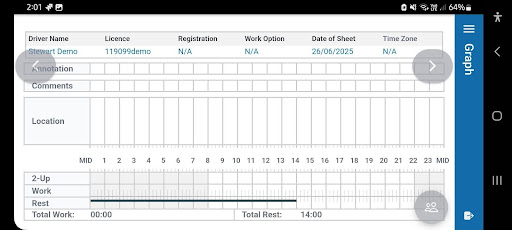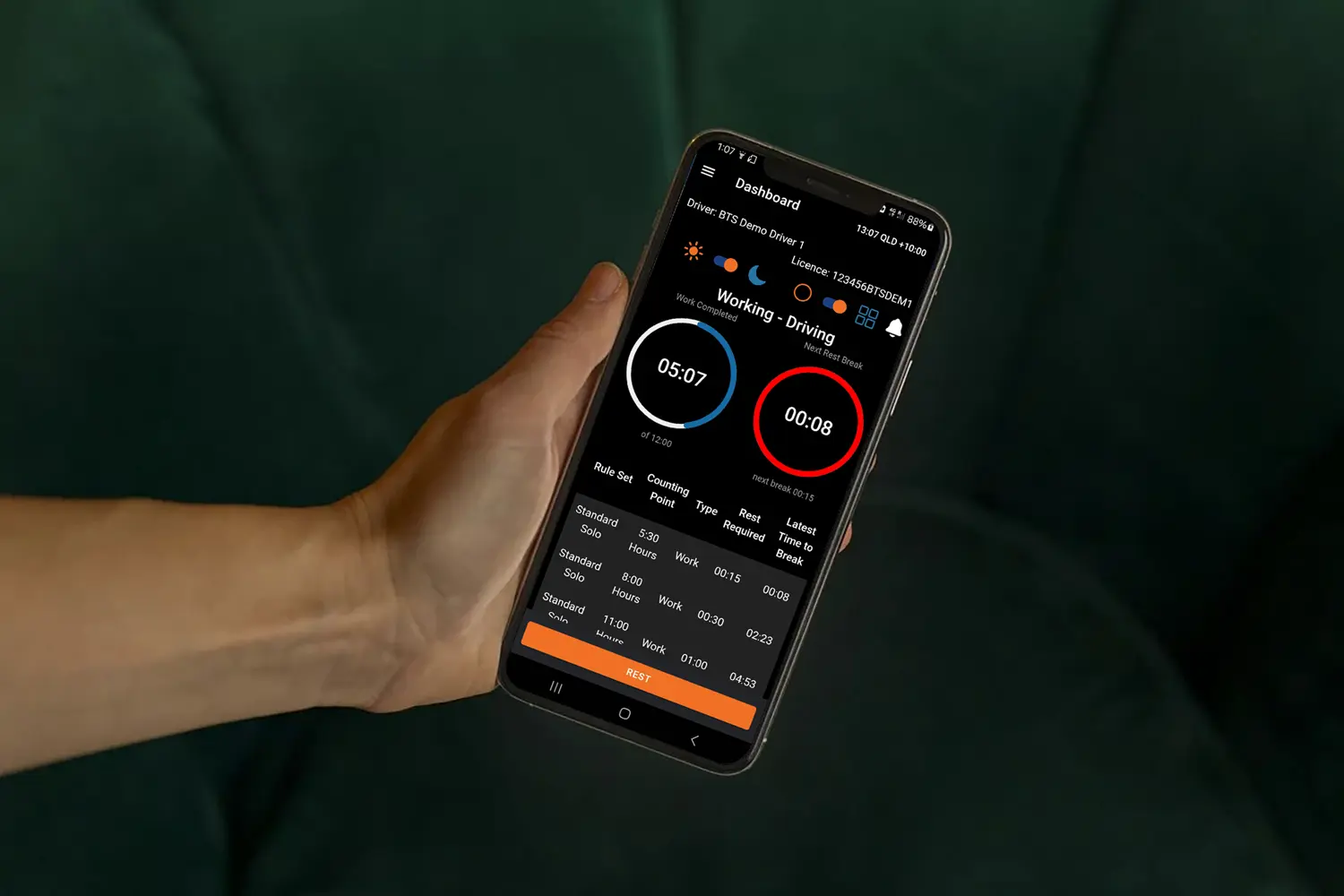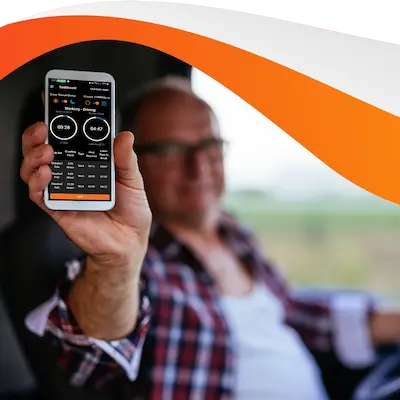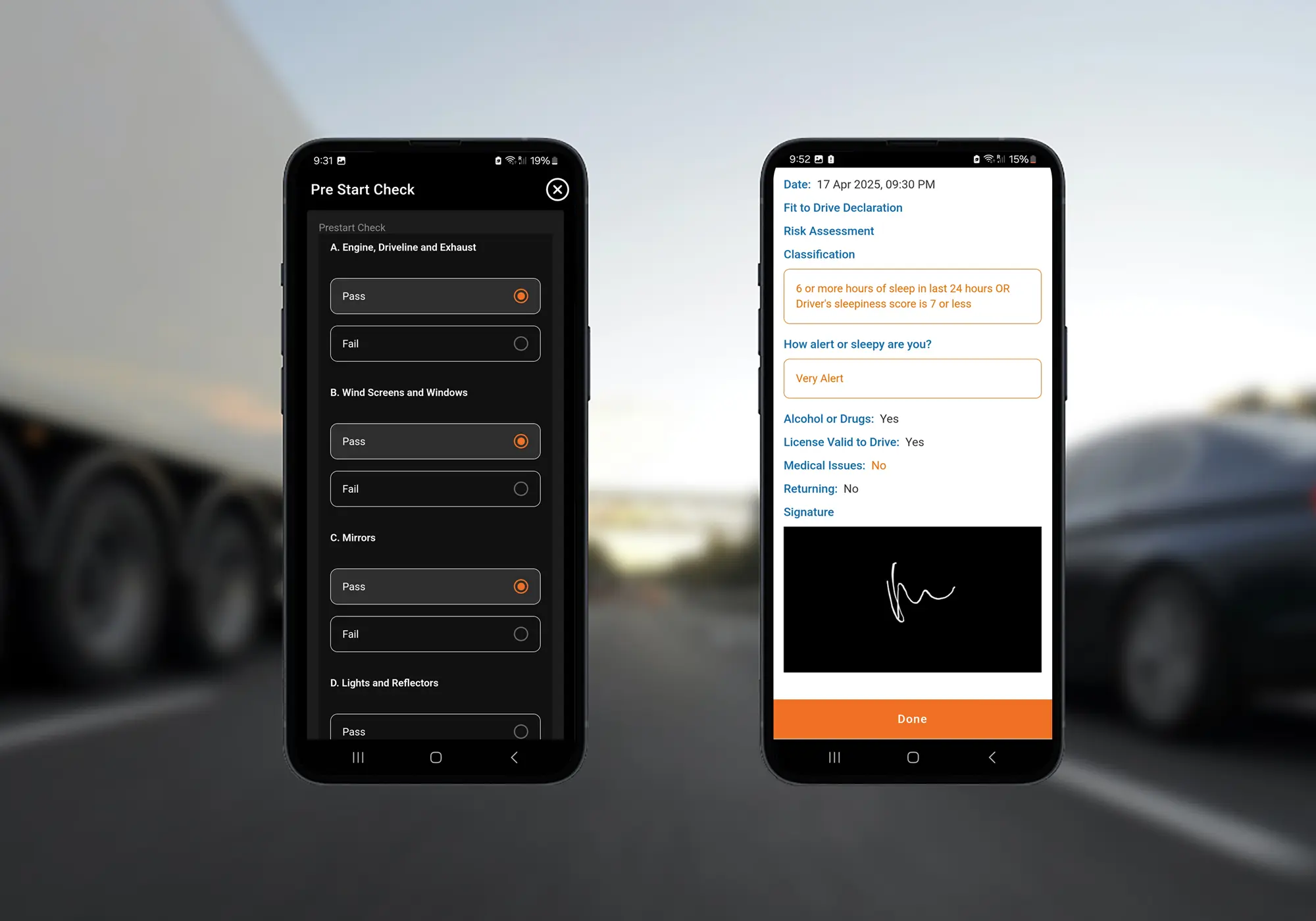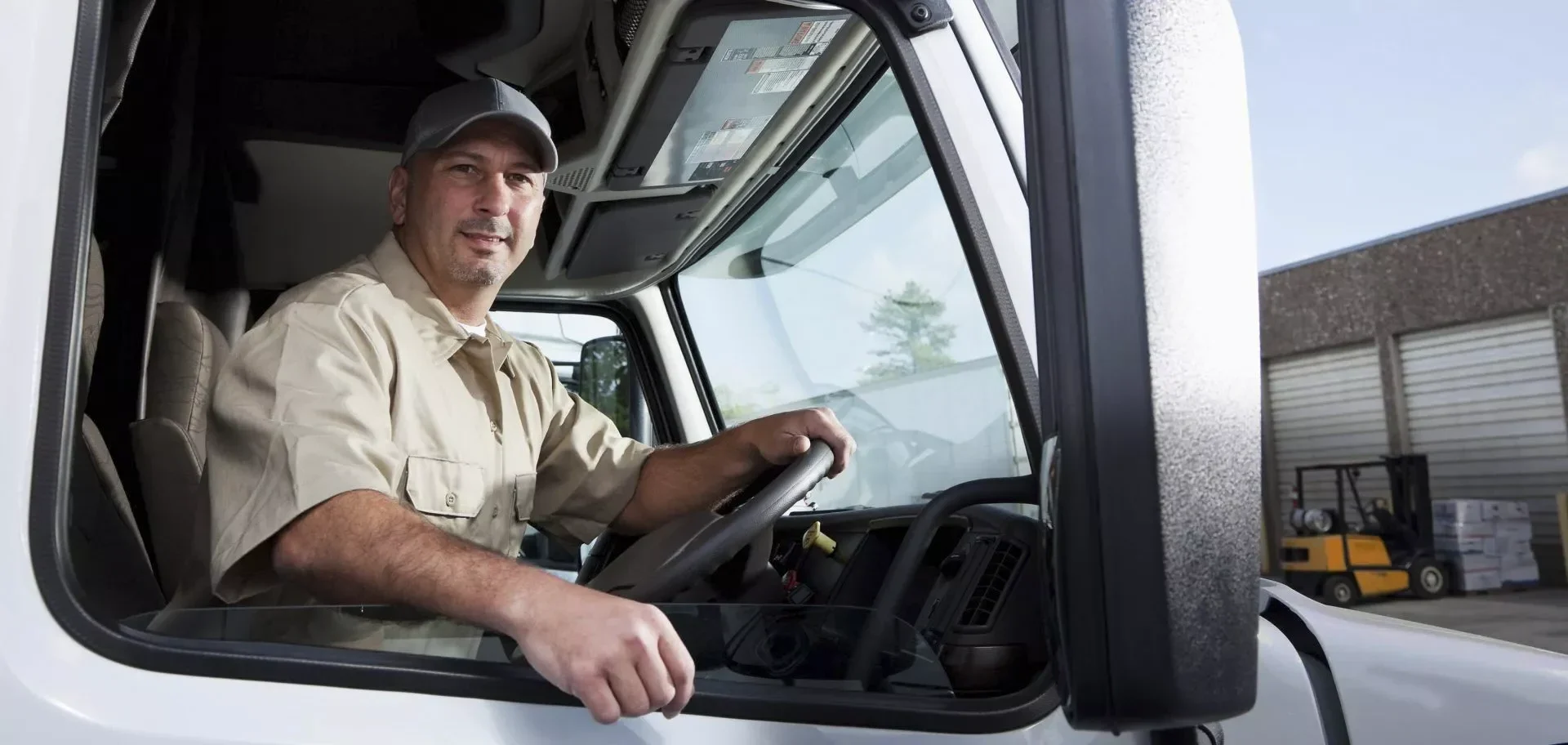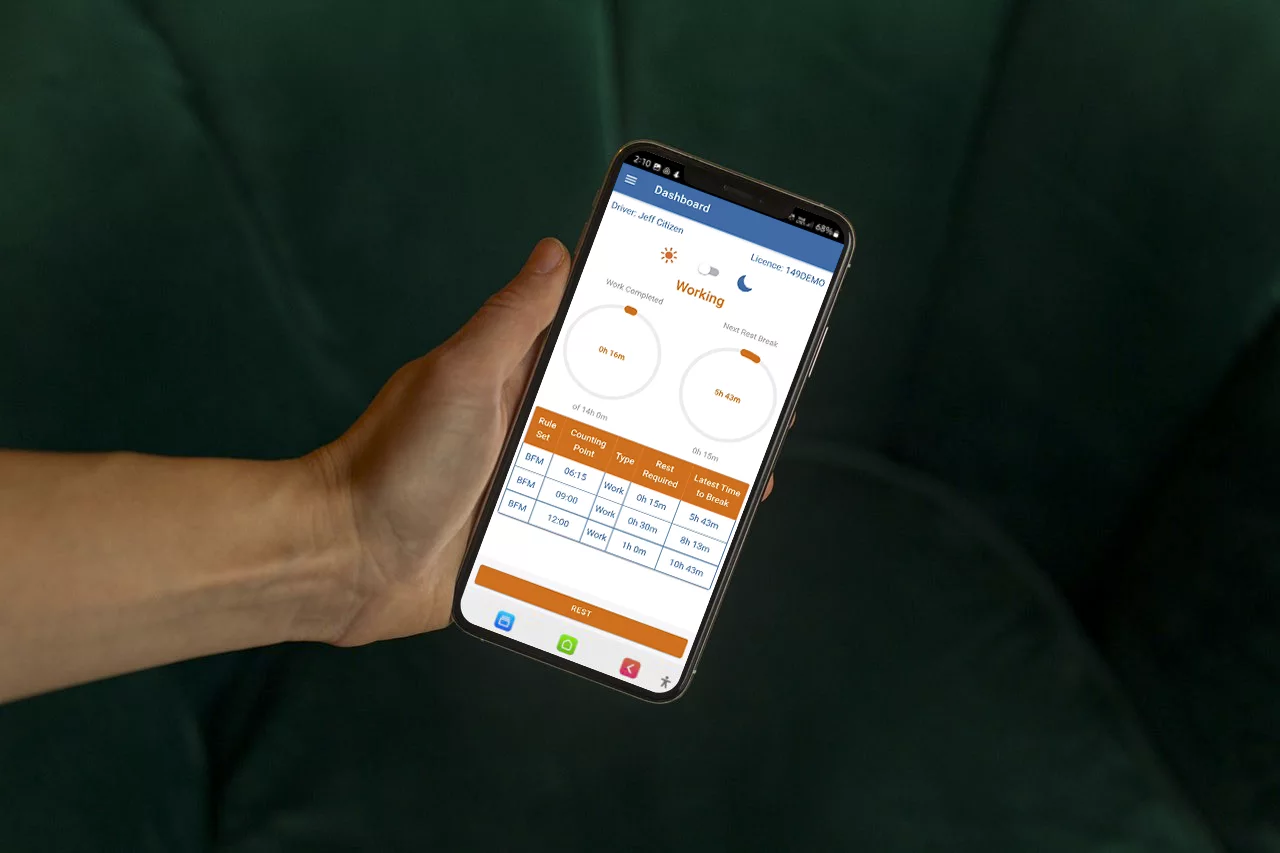At Logmaster, we’ve seen a growing number of drivers who choose to run the Logmaster app on a second device—usually a tablet mounted in the cab or a dedicated work phone. While it’s entirely optional (Logmaster works perfectly on a single device), the reasons behind this choice can be quite practical and sometimes surprisingly specific.
A Bigger, More Convenient Display
One of the most common reasons is screen size. A mounted tablet in the cab makes it easier for drivers to view their hours at a glance, especially in bright light or from a seated driving position. Some drivers simply prefer the look and feel of using a larger display than their personal phone. Others find it useful to have the tablet positioned in a fixed cradle that’s always charged and ready.
Tablets Issued by the Company
Many fleets issue tablets to their drivers that already run route tracking, job dispatch, or proof-of-delivery software. It makes sense to install Logmaster on that same device so all the essential tools are in one place. In these cases, Logmaster becomes part of the daily workflow, without needing drivers to touch their personal phones.
Mounted Displays Are Becoming the Norm
So many drivers and companies are choosing large-screen devices that Logmaster now regularly gets asked for recommendations. In response, we’ve added a list of trusted tablets, mounts, and power options to our website to make it easier to get set up with something reliable. If you’re looking for a good tablet or a rugged mount for rough roads, we’ve probably already tested one.
Privacy Concerns During Roadside Inspections
Another common motivation is privacy—drivers are understandably cautious about handing over their personal phone during a roadside inspection. But the good news is: Logmaster already protects your privacy.
When you activate Compliance Mode for an officer, Logmaster enters a special locked-down view designed just for inspections. On Android, the app pins itself to the screen so the officer can’t leave the app or view anything else. On iPhones and iPads, you can enable Guided Access, which offers the same protection. When the inspection ends, the driver must enter their device PIN or password to exit the mode.
That means your photos, texts, emails, and social media are completely protected. From a privacy standpoint, there’s no real need to use a second device—unless you just prefer it.
We’ve also received feedback from an increasing number of compliance officers across several states who say they prefer conducting inspections on larger screens. When presented with a small phone at the roadside, officers sometimes find it difficult to read the log entries comfortably. In these cases, many choose to send themselves a copy of the 28-day log and review it on their own device. While this process is entirely compliant and works well, drivers using a very small screen might consider whether a larger tablet could make that handover easier and smoother for everyone involved.
What About Network Coverage?
We occasionally hear from drivers who are concerned about poor mobile signal while travelling through remote areas. And it’s true: Telstra advertises broad coverage, but many drivers can point to places where reception just drops out. The good news is, Logmaster is built for that.
The app is designed to keep functioning normally even when the device is offline. It uses the device’s internal memory to store logs temporarily and automatically syncs them to our secure server once a connection becomes available again. You don’t need to worry about memory usage or data loss—Logmaster detects and handles those conditions in the background.
So, while a second device won’t improve coverage or signal, the app itself has you covered.
Data Usage and Security
Some drivers are on prepaid plans and worry that running Logmaster will burn through their mobile data. In reality, Logmaster uses very little data. It only sends the information necessary to record logbook events, which adds up to a few hundred kilobytes a day. That’s less than a single high-res photo.
And on the security front, Logmaster encrypts your data both during transmission and at rest. It meets all NHVR privacy and cybersecurity requirements for Electronic Work Diaries.
Bottom Line
If you want to run Logmaster on a second phone or a cab-mounted tablet, go for it—it’s fully supported. But you don’t need to for reasons like privacy, signal, memory, or data use. Whether you stick with your everyday phone or set up a purpose-built screen in the truck, Logmaster will work the same way: accurately, securely, and with minimal fuss.




